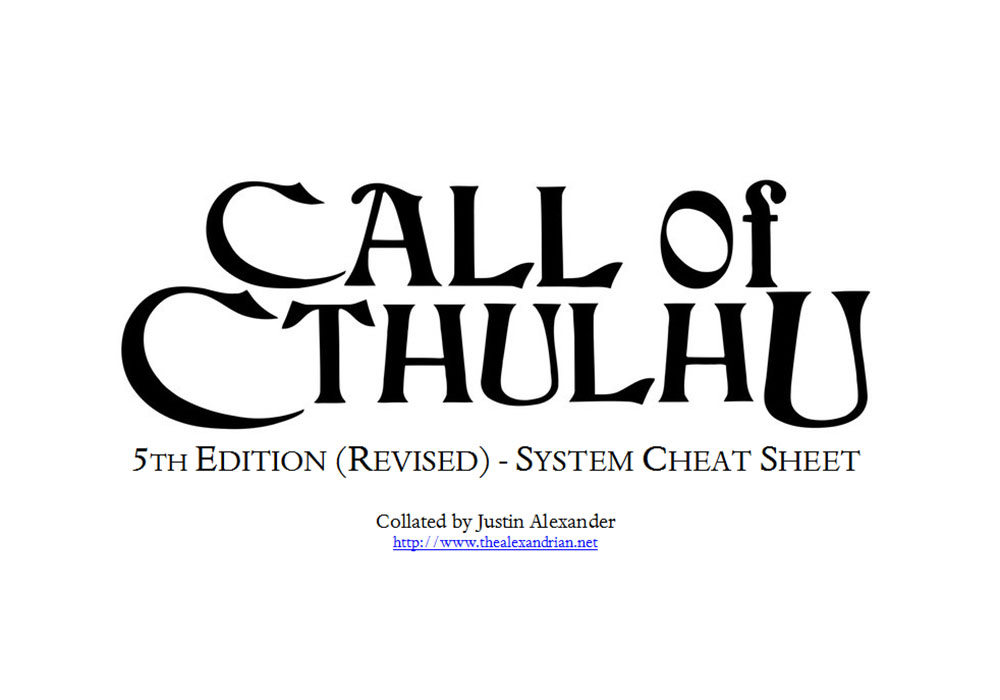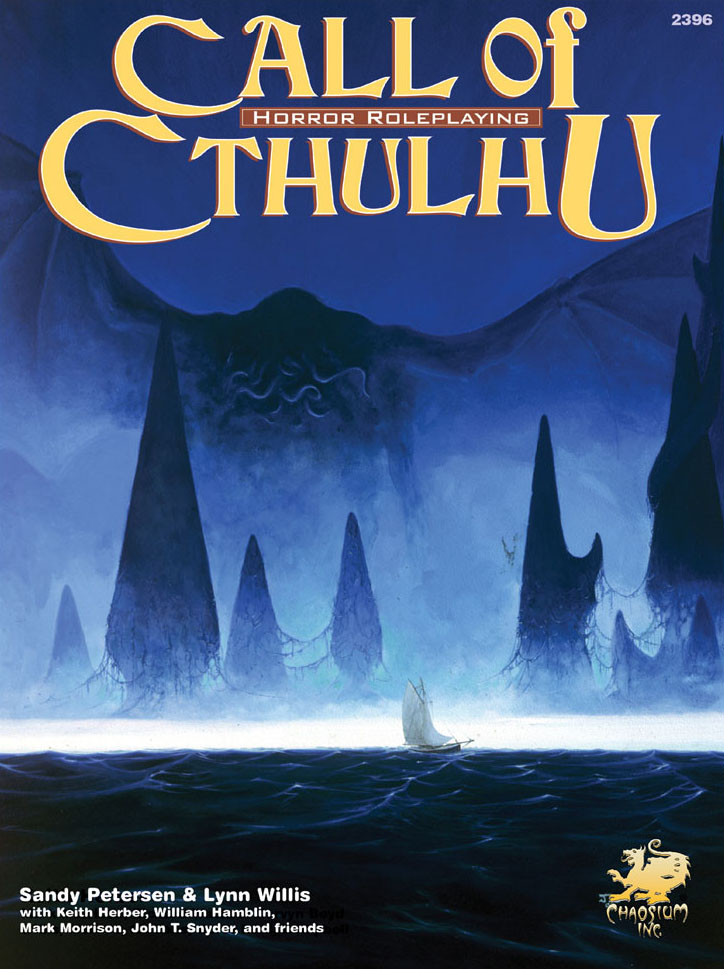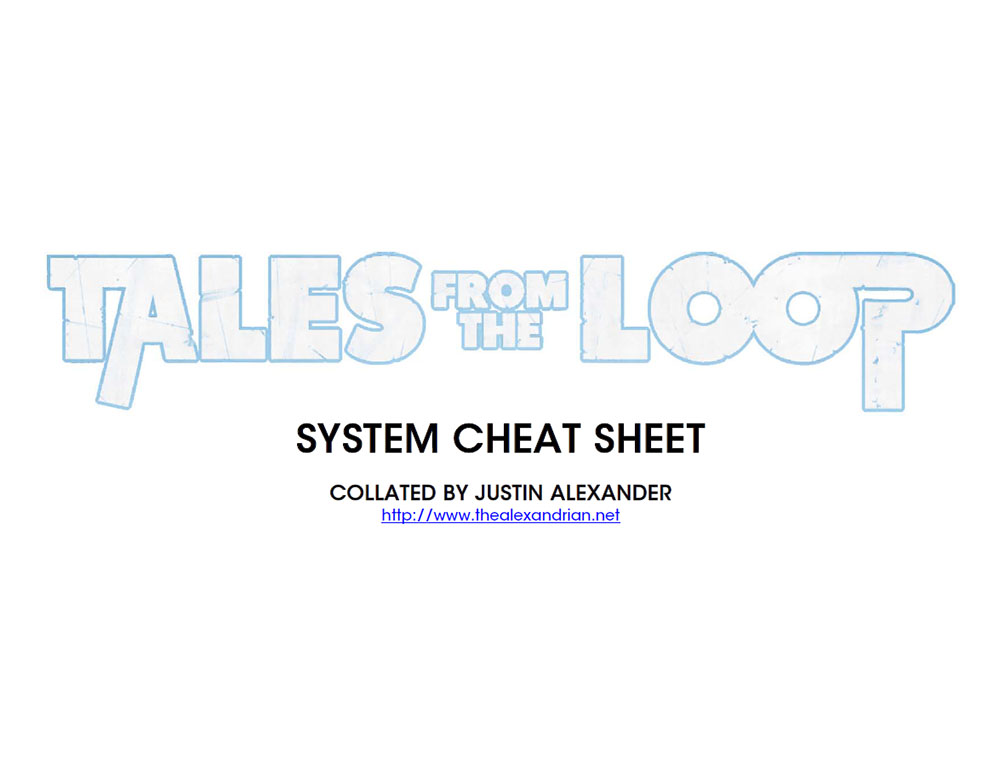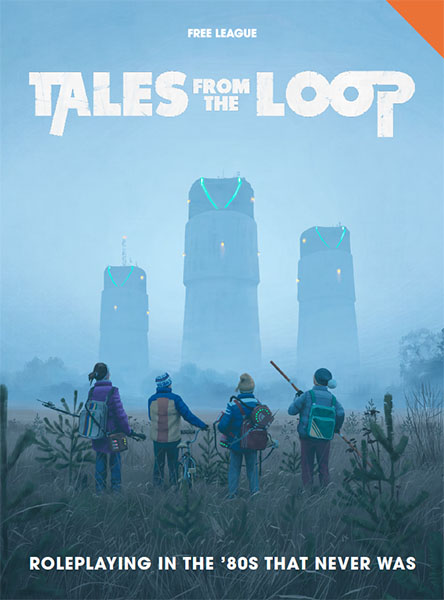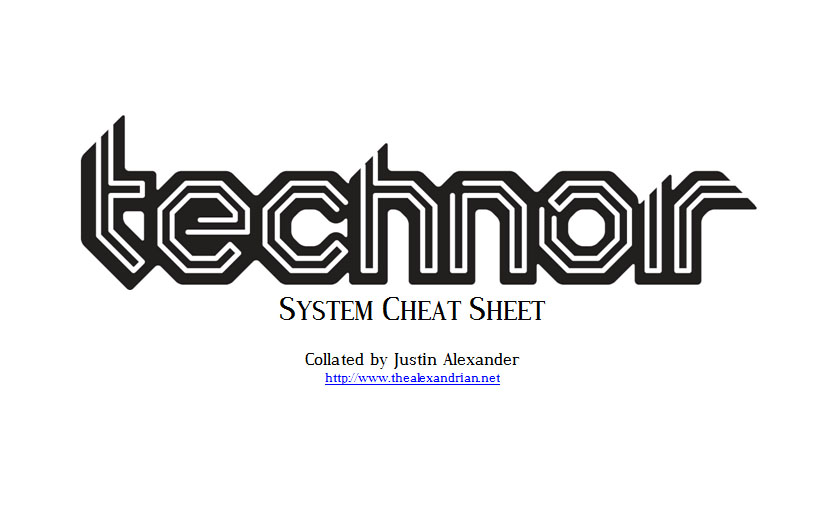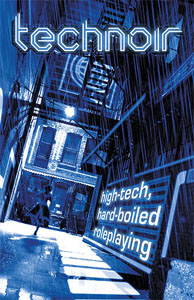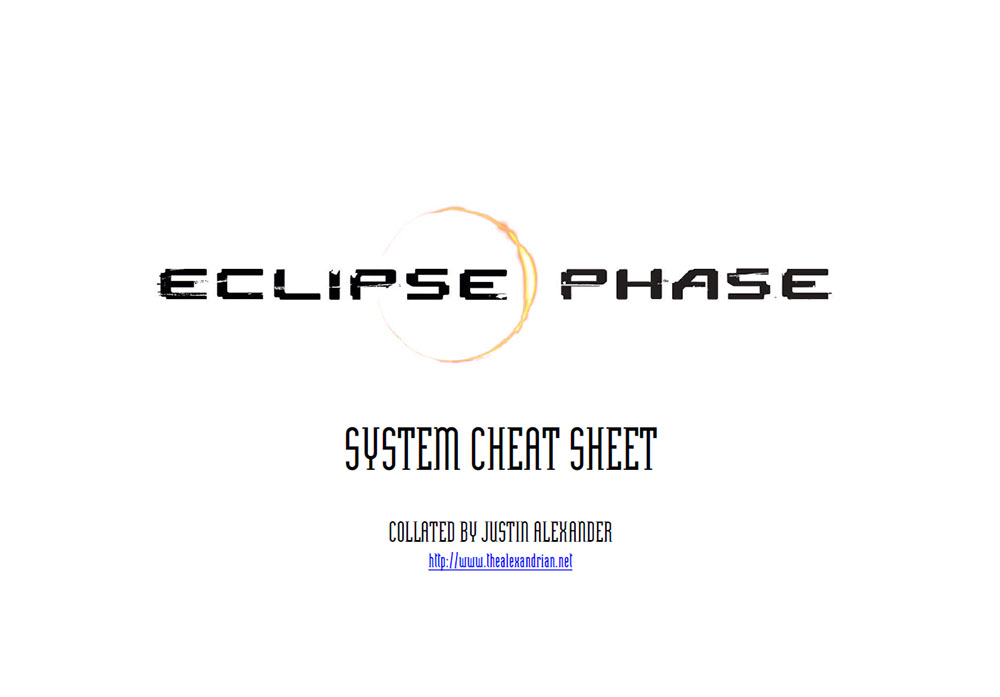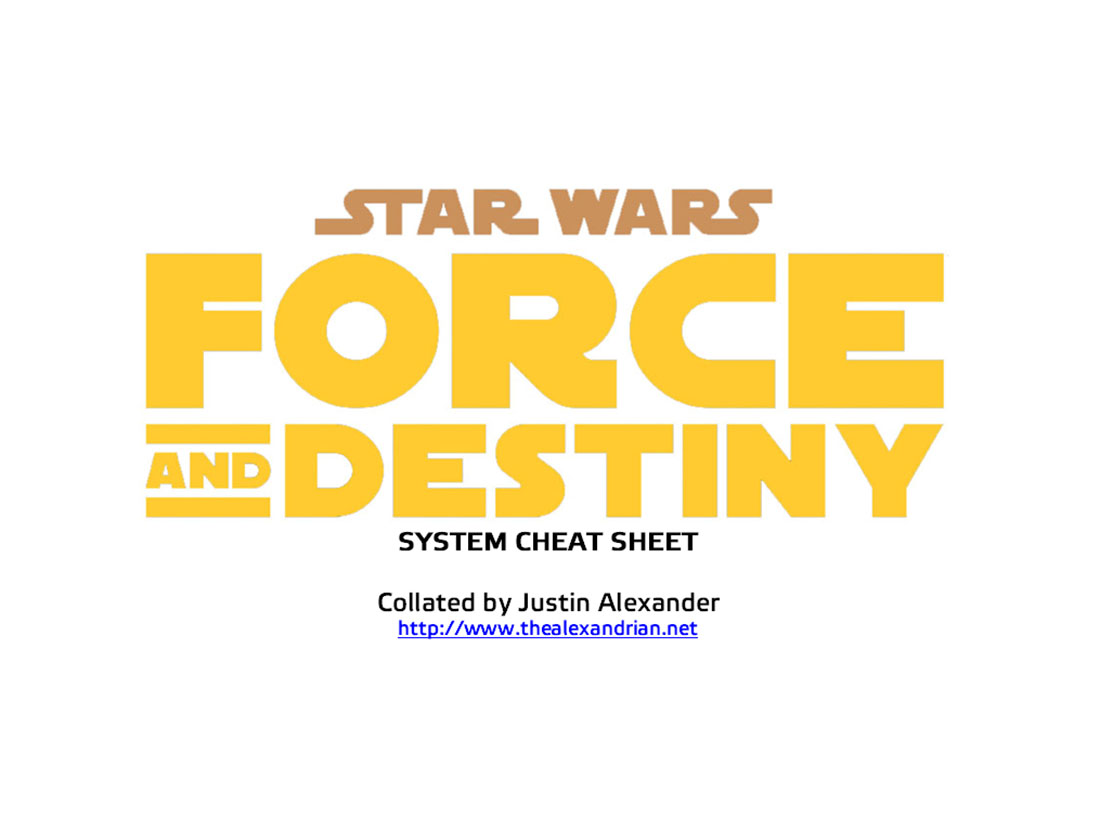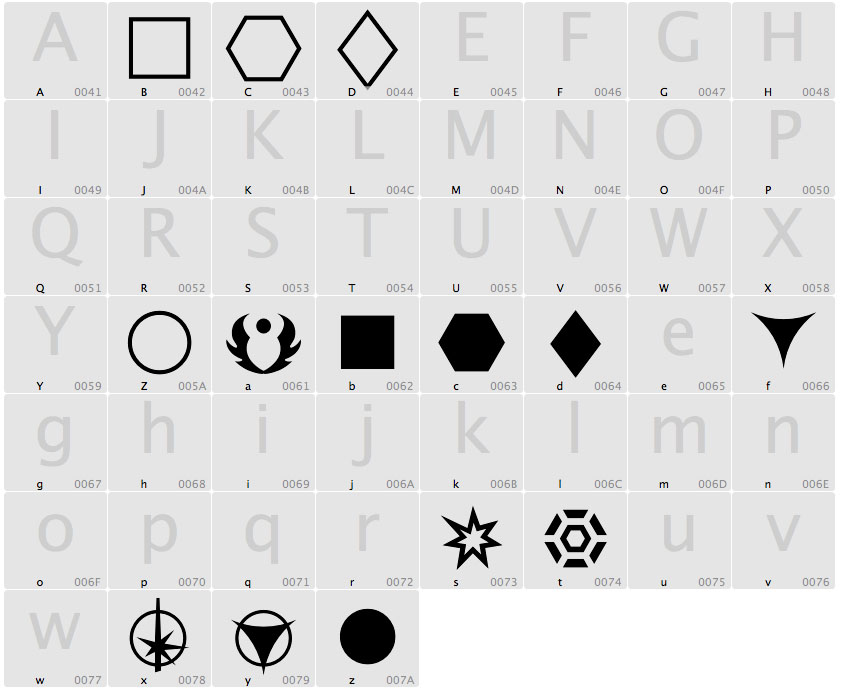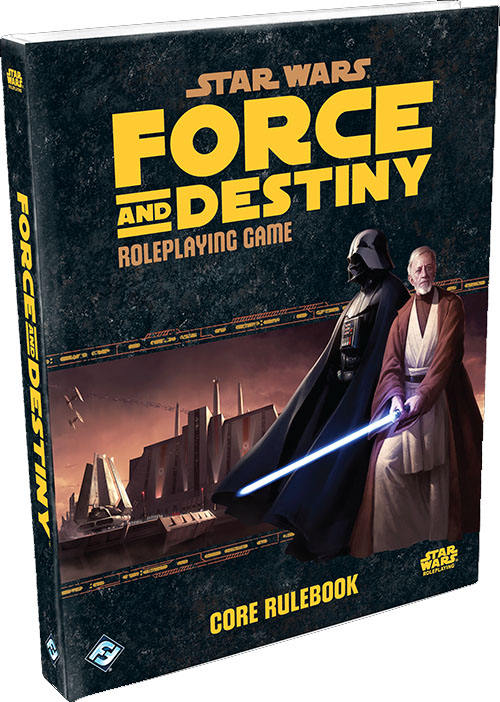Although this cheat sheet has been specifically designed for the Revised 5th Edition of Call of Cthulhu (because that is the version which I use), it should serve just as well with the original 5th Edition and 6th Edition because the changes between those editions are essentially inconsequential. (The only reason I don’t use 6th Edition is because (a) I already own 5th Edition, (b) I like the cover painting for the revised 5th Edition better, and (c) I find the 6th Edition rulebook virtually illegible because of the fonts used.) It can also probably be used nigh-seamlessly with 2nd, 3rd, and 4th Editions, as the mechanical changes from those editions to 5th Edition are limited, if I recall correctly, to a very minor revision of the skill list and some changes to character creation mechanics (which don’t affect these cheat sheets). The change from 1st Edition (which I do not own) to 2nd Edition reputedly includes a rather major change to the magic system, so this cheat sheet will probably be of less worth to anyone still running a 1st Edition campaign.
It is quite likely that I will end up producing a version of this cheat sheet for 7th Edition (which contains a greater number of mechanical changes), especially as I have recently won a complete set of the 7th Edition rulebooks as a prize for a Novus Ordo Seclorum advancement event at Gen Con this year. However, I believe that this cheat sheet will nevertheless have an enduring value because I know that here are a great number of Keepers who are continuing their pre-7th Edition campaigns with no intention of shifting to the new edition.
If you’re not familiar with these system cheat sheets, you should know that the goal is to summarize all the rules of the game – from basic resolution to the spot rules for actions, combat, firearms, injury, and the like. It’s a great way to get a grip on a new system, introducing new players to the game, and providing a long-term resource for both GM and players. (For more information on the methods I use for prepping these sheets, click here.)
WHAT’S NOT INCLUDED
These cheat sheets are not designed to be a quick start packet: They’re designed to be a comprehensive reference for someone who has read the rulebook and will probably prove woefully inadequate if you try to learn the game from them. (On the other hand, they can definitely assist experienced players who are teaching the game to new players.)
The cheat sheets also don’t include what I refer to as “character option chunks” (for reasons discussed here). In other words, you won’t find the rules for character creation here.
HOW I USE THEM
I generally keep a copy of my system cheat sheets behind my GM screen for quick reference and I also place a half dozen copies in the center of the table for the players to grab as needed. The information included is meant to be as comprehensive as possible; although rulebooks are also available, my goal is to minimize the amount of time people spend referencing the rulebook: Finding something in 6 pages of cheat sheet is a much faster process than paging through a 400 page rulebook. And, once you’ve found it, processing the streamlined information on the cheat sheet will (hopefully) also be quicker.
The organization of information onto each page of the cheat sheet should, hopefully, be fairly intuitive. The actual sequencing of pages is mostly arbitrary.
Page 1 – Basic Mechanics: Because Call of Cthulhu is, at its heart, a pretty simplistic game (roll percentile dice and compare to a skill), this core reference sheet also includes the basic mechanics for Combat (including Injury).
Page 2 – Spot Rules for Combat: I find that a lot of Call of Cthulhu Keepers and players tend to forget that the system actually does have quite a few advanced options (which it refers to as spot rules, such as Spot Rules for Firearms). There’s a lot more gritty mechanical options that can be leveraged than you might realize if you’ve primarily experienced the game at the fairly ubiquitous tables which use a more casual approach to things.
Page 3 – Spot Rules for Skills: All the niggling little guidelines hidden away in the skill chapter are pulled out here for quick reference.
Page 4 – Sanity Rules: I find it interesting that these are always referred to as Sanity mechanics when it would seem more appropriate to refer to them as the Insanity mechanics.
Page 5 – Mythos Tomes and Magic: Pretty much what it says on the tin.
MAKING A GM SCREEN
These cheat sheets can also be used in conjunction with a modular, landscape-oriented GM screen (like the ones you can buy here or here).
I usually use a four-panel screen and use reverse-duplex printing in order to create sheets that I can tape together and “flip up” to reveal additional information behind them. In this case, however, I have not actually used these cheat sheets in conjunction with a GM screen (as the sessions I’ve been running have been conducive to a more intimate space), so I’ve only used the stapled packets. However, I’d recommend placing the Spot Rules for Skills behind the Spot Rules for Combat, as I feel they’re the rules least likely to be used frequently and also least likely to benefit from being taken in at a glance.

